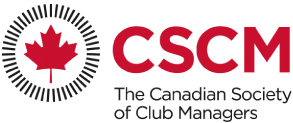If your time to you is worth saving
Then you better start swimmin’ or you’ll sink like a stone
For the times they are a-changin’
– The Times They Are A Changin’, Bob Dylan
The songwriter, poet and social observer Bob Dylan warned us about change. Back in 1964, he said it was a-coming. Forty-five years later, we are reminded of his prescience.
In private clubs, change has arrived in full force and shows no signs of slowing. As a new year reveals itself, private club leaders should be alert to change in five key areas affecting their operations.
1. Economy – A surging economy has helped a number of clubs in North America add members in the last two years. But many experts are forecasting a softer economy in 2019. According to the Conference Board’s November 2018 report, “Higher interest rates, and the intention of the Federal Reserve to keep raising them into 2019, will create a more challenging environment for business next year.” That means membership recruitment and retention are still top priorities at most clubs.
Global Golf Advisors estimates that less than seven percent of the 4,400 private clubs in North America are full and working from a waiting list for admission. Anticipating that the economy may soften, private club leaders must intensify their efforts to recruit new members while giving focused attention to retaining existing ones.
Often the solution is not a price change, but something more creative, such as ones that make the club more personal and relevant to today’s lifestyles.
What are the right moves for your club? The answers start with knowing your members as well as your prospects and knowing what they value most in a club relationship. If you don’t know how they define value, ask them.
2. Delay no longer a strategy – In the heat of the recession, many businesses, including many private clubs, decided to forego capital improvements until times got better. Times got better, but many continued to delay investment.
Now many clubs are playing catch-up on deferred capital improvements. In the process, they’re discovering that new members are attracted to standards of quality that match their personal lifestyles.
That means that improvements to club facilities, programs and staff must reflect a long-term commitment to sustained quality. Most members want their clubs to be better five years from now and club leaders are obliged to fulfill that expectation.
Club leaders do well to establish a broad standard of excellence for the club. This is where clubs can truly be “unique,” as everyone like to profess. The standard of excellence dictates the qualities of fit and finish for the facilities, the style and level of services and the types of recreational programs offered members.
3. Brand takes on added significance – Private clubs are brands, and just as a particular soft drink, computer or automobile stands for something in consumers’ eyes, so does your club stand for something in the eyes of your members and prospects. Club leaders must develop an intentional branding strategy that sustains the promises on which the club has built its reputation, including course conditions, levels of service and culture.
For brand planning in a private club, several keys apply:
- Confirm the club’s potential tax-exempt status to ensure conformity with the U.S. Tax Code;
- Develop and implement a proactive communications plan that reinforces primary brand pillars, and
- Remember that the club’s brand is reflected in everything it does . . . and fails to do. Everything communicates.
When making any key decisions about the future of the club, make sure you’re staying true to your brand promise.
4. Security and privacy concerns are increasing. In a world rife with cyber threats, private clubs are highly vulnerable targets. People of means gathered in one easy-to-access vault of names, addresses and possibly financial information constitute an attractive target for those ill-intentioned among us.
Members place their trust in their club to safeguard their privacy. Break that bond and the consequences could be irreparable. Club leaders must contract with companies expert in securing their club’s sizeable data storehouse and secure this information. This threat will expand in 2019 at clubs that are unprepared
5. Access and affordability of labor is changing clubs. Most clubs surveyed by GGA report increasing direct and indirect labor costs. Many clubs are outsourcing work through contract-labor arrangements. Some clubs are securing overseas workers for seasonal needs. All clubs are evaluating steps to reduce the reliance on accessible labor for routine club services.
In some clubs, self-service is taking hold. In progressive clubs, new solutions including F&B orders entered on tablets, are reducing head-count. Some clubs are exploring making the golf halfway house and the tennis and pool snack shacks honor-system facilities, where losses are likely to be less than the labor costs to secure them.
On the flip side of Dylan’s ballad that promised change was a song titled “Honey, Just Allow Me One More Chance.” A new year gives us revived opportunities – one more chance – to get ahead of change. We better start swimmin’.
This piece was authored by GGA Partner Henry DeLozier for BoardRoom Magazine.










